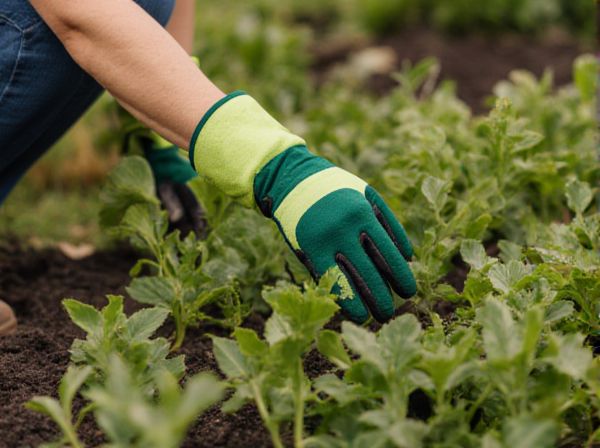
Staggered Harvest vs Bulk Harvest Illustration
Staggered harvest allows crops to be picked at optimal ripeness, improving quality and reducing waste compared to bulk harvest, where all produce is gathered simultaneously regardless of maturity. This method supports better market timing and maximizes yield by accommodating varying growth rates within the field. Bulk harvest prioritizes efficiency and speed, making it suitable for large-scale operations where uniform crop maturity is common.
Table of Comparison
| Feature | Staggered Harvest | Bulk Harvest |
|---|---|---|
| Harvest Timing | Multiple harvests over time | Single, large-scale harvest |
| Crop Quality | Consistent, optimized quality per batch | Variable quality due to uniform harvest time |
| Labor Management | Spread out labor demand | High labor demand at once |
| Storage Requirements | Smaller, frequent storage needs | Large, immediate storage needed |
| Market Supply | Steady supply over time | Supply peaks then drops |
| Risk Management | Reduces risk of total crop loss | Higher risk if adverse events occur |
| Cost Efficiency | Higher processing costs per unit | Lower costs due to scale |
Understanding Staggered Harvest and Bulk Harvest
Staggered harvest involves collecting crops in multiple phases based on varying ripening times, allowing precise timing to optimize yield and quality for each batch. Bulk harvest gathers the entire crop simultaneously, prioritizing speed and efficiency but often sacrificing uniformity in ripeness and quality. Choosing between staggered and bulk harvest methods depends on factors such as crop type, market demand, labor availability, and storage capabilities.
Key Differences Between Staggered and Bulk Harvesting
Staggered harvest involves collecting crops at multiple intervals, allowing optimal ripeness and reducing spoilage, whereas bulk harvest gathers the entire crop at once, maximizing efficiency but risking uneven quality. Staggered harvesting requires more labor and planning but improves overall yield quality and market timing. Bulk harvest is faster and less costly but can lead to increased waste and fluctuating market prices due to variations in crop maturity.
Benefits of Staggered Harvest in the Garden
Staggered harvest in the garden extends the availability of fresh produce by allowing crops to ripen progressively, reducing the risk of overripe or wasted vegetables. This method supports continuous garden maintenance and easy pest management by preventing large, concentrated crop loads that attract pests. Gardeners benefit from improved soil health and nutrient distribution, as staggered harvest encourages rotational planting and reduces soil depletion.
Advantages of Bulk Harvest for Growers
Bulk harvest offers growers significant efficiency improvements by enabling rapid collection of crops in large volumes, reducing labor costs and minimizing harvesting time. This method facilitates streamlined processing and transportation logistics, contributing to better resource management and lower operational expenses. High throughput of bulk harvest also allows for quicker market delivery, enhancing freshness and potentially increasing profitability for growers.
Choosing the Right Harvesting Method for Your Crops
Choosing the right harvesting method depends on crop type, field size, and labor availability; staggered harvest allows multiple pickings, reducing crop loss and improving quality for delicate fruits like berries and tomatoes. Bulk harvest suits large-scale operations with sturdy crops such as grains, maximizing efficiency through mechanization and faster processing. Assessing crop sensitivity, market timing, and resource constraints ensures optimal yield and profitability.
Crop Types Best Suited for Staggered Harvest
Staggered harvest is ideal for crops with varying maturity rates such as lettuce, spinach, and strawberries, which benefit from multiple pickings to maximize yield and quality. Perishable fruits and vegetables like tomatoes and peppers also thrive under staggered harvesting as it allows for continuous market supply while reducing spoilage. Crops with uniform maturity, such as wheat or corn, are less suited for staggered harvest and are better managed through bulk harvesting methods.
Crops Ideal for Bulk Harvesting
Crops such as wheat, corn, soybeans, and rice are ideal for bulk harvesting due to their uniform maturation and ease of mechanical collection. Bulk harvesting optimizes efficiency by minimizing field passes and reducing labor costs, which is especially advantageous for large-scale operations. Crops with consistent moisture content and sturdy stalks are best suited for this method, ensuring minimal loss and maintaining quality during transport and storage.
Tips for Successfully Implementing Staggered Harvest
Staggered harvest improves crop quality and market timing by allowing gradual picking based on varying crop maturity. Key tips for successful implementation include careful field mapping to identify zones of differing ripeness, regular monitoring of crop development, and scheduling harvest crews accordingly to maximize efficiency. Employing these strategies reduces waste and enhances overall yield quality compared to bulk harvesting methods.
Maximizing Yield and Quality with Bulk Harvest
Bulk harvest enables farmers to maximize yield by collecting all crops simultaneously, reducing losses caused by prolonged exposure to weather or pests. This method ensures uniform quality by harvesting produce at peak ripeness, facilitating efficient processing and storage. Opting for bulk harvest streamlines logistics and minimizes labor costs, contributing to overall operational efficiency.
Common Mistakes to Avoid with Each Harvesting Method
Staggered harvest often leads to inconsistent crop maturity, causing loss of quality and increased labor costs if timings are poorly managed. Bulk harvest mistakes typically include premature harvesting that reduces overall yield and increases post-harvest spoilage due to improper crop drying. Avoiding these errors requires precise monitoring of crop ripeness and implementing effective field management strategies tailored to each harvesting method.
Staggered Harvest vs Bulk Harvest Infographic

 gardendif.com
gardendif.com